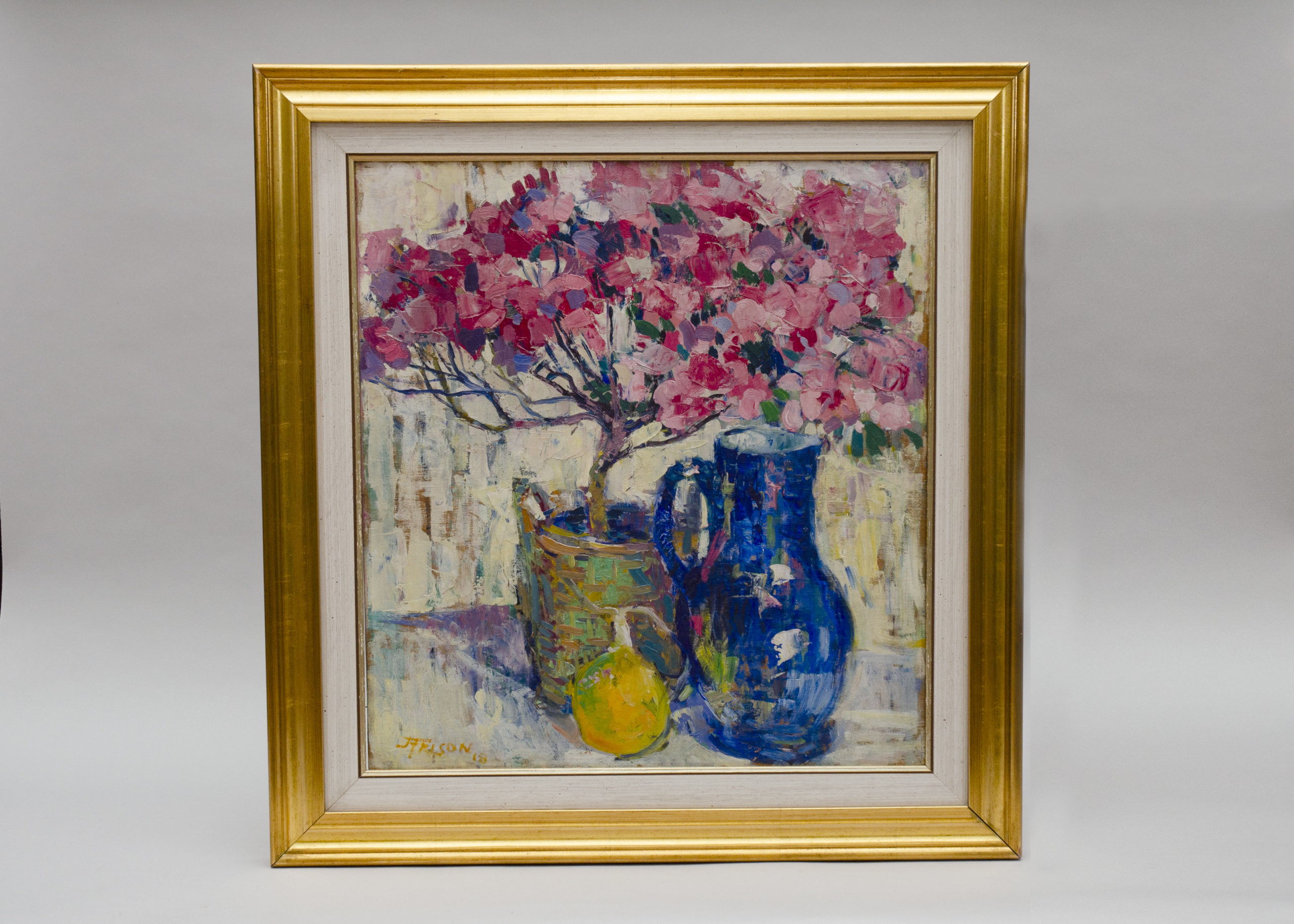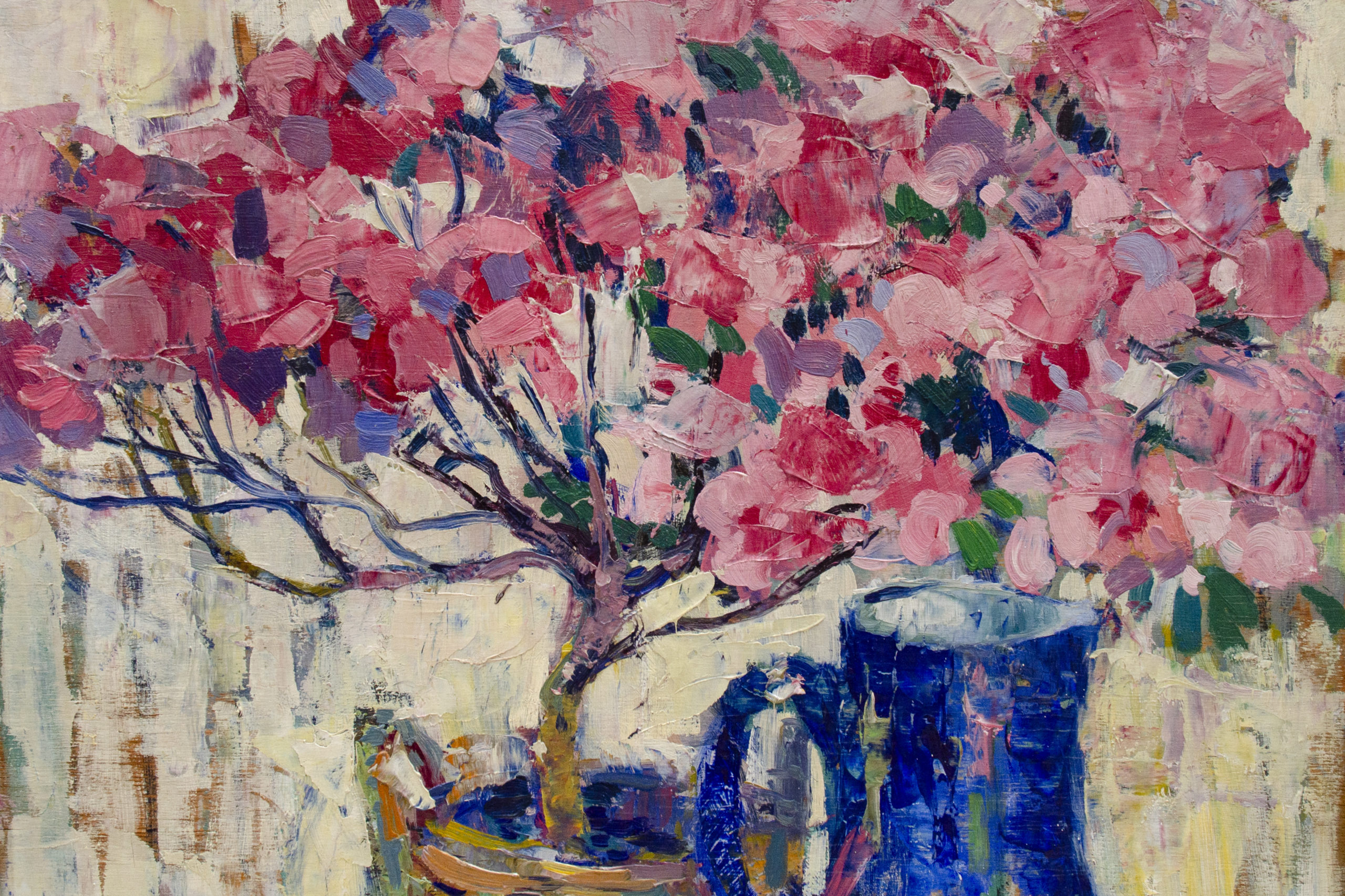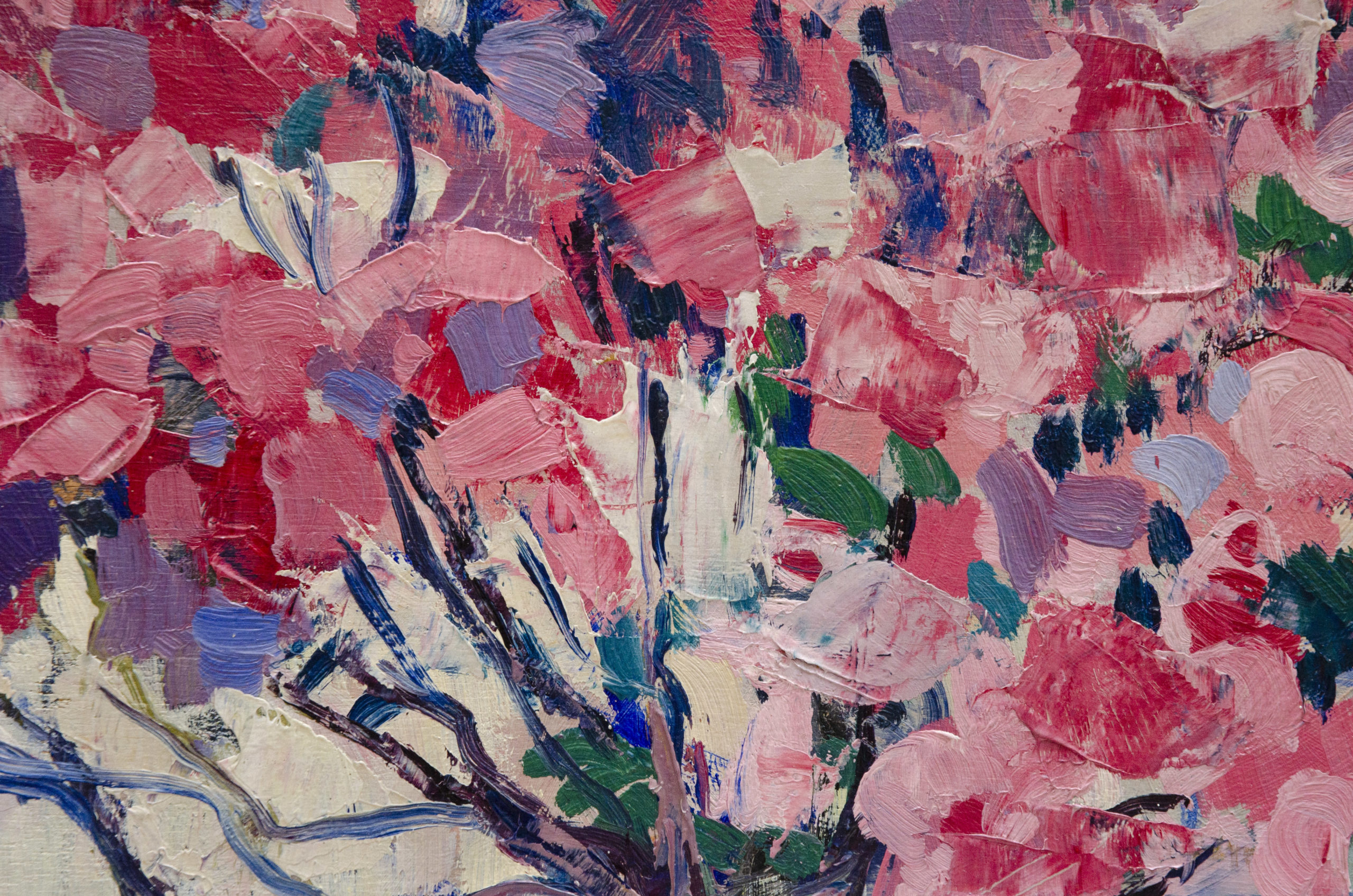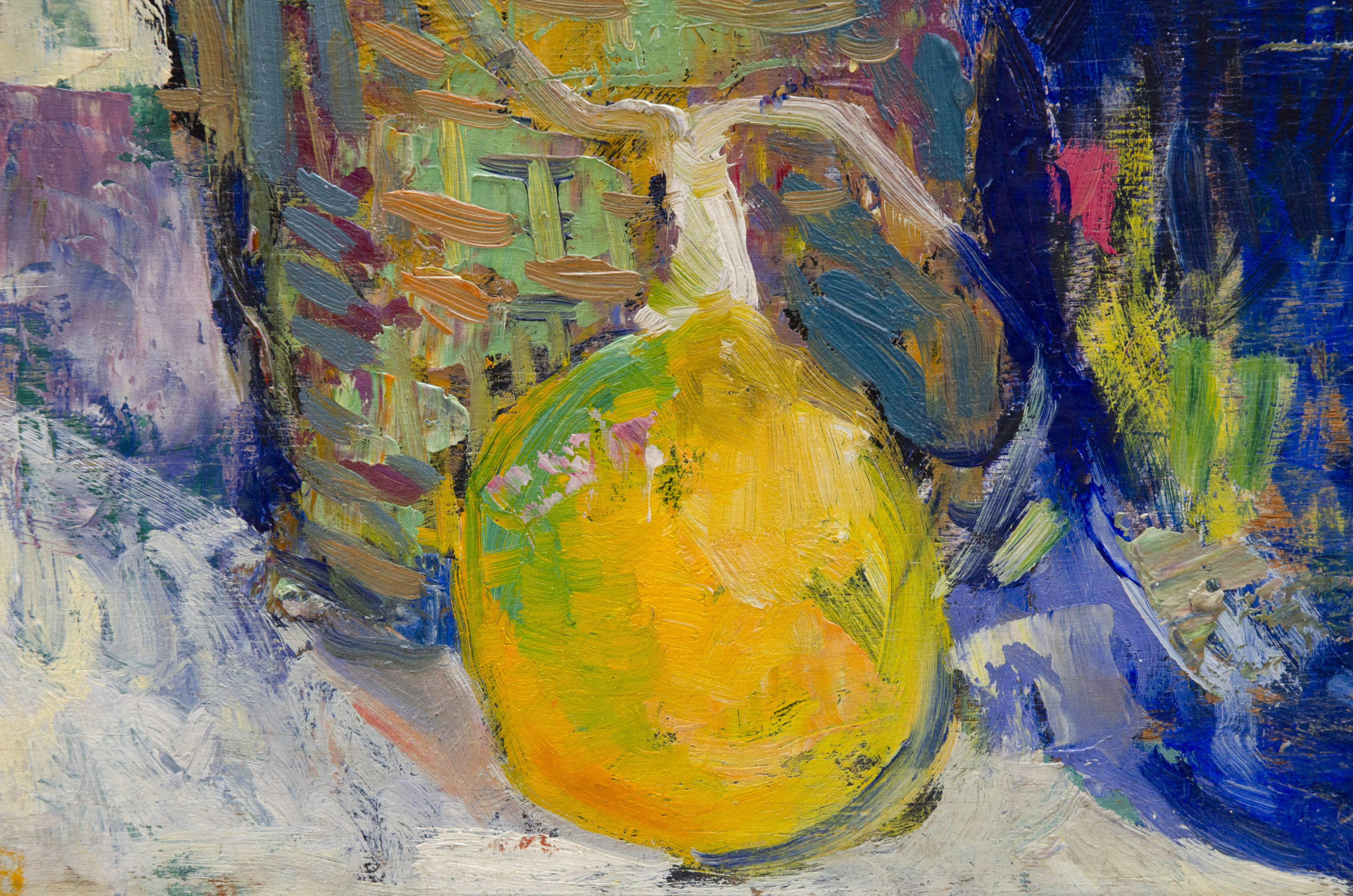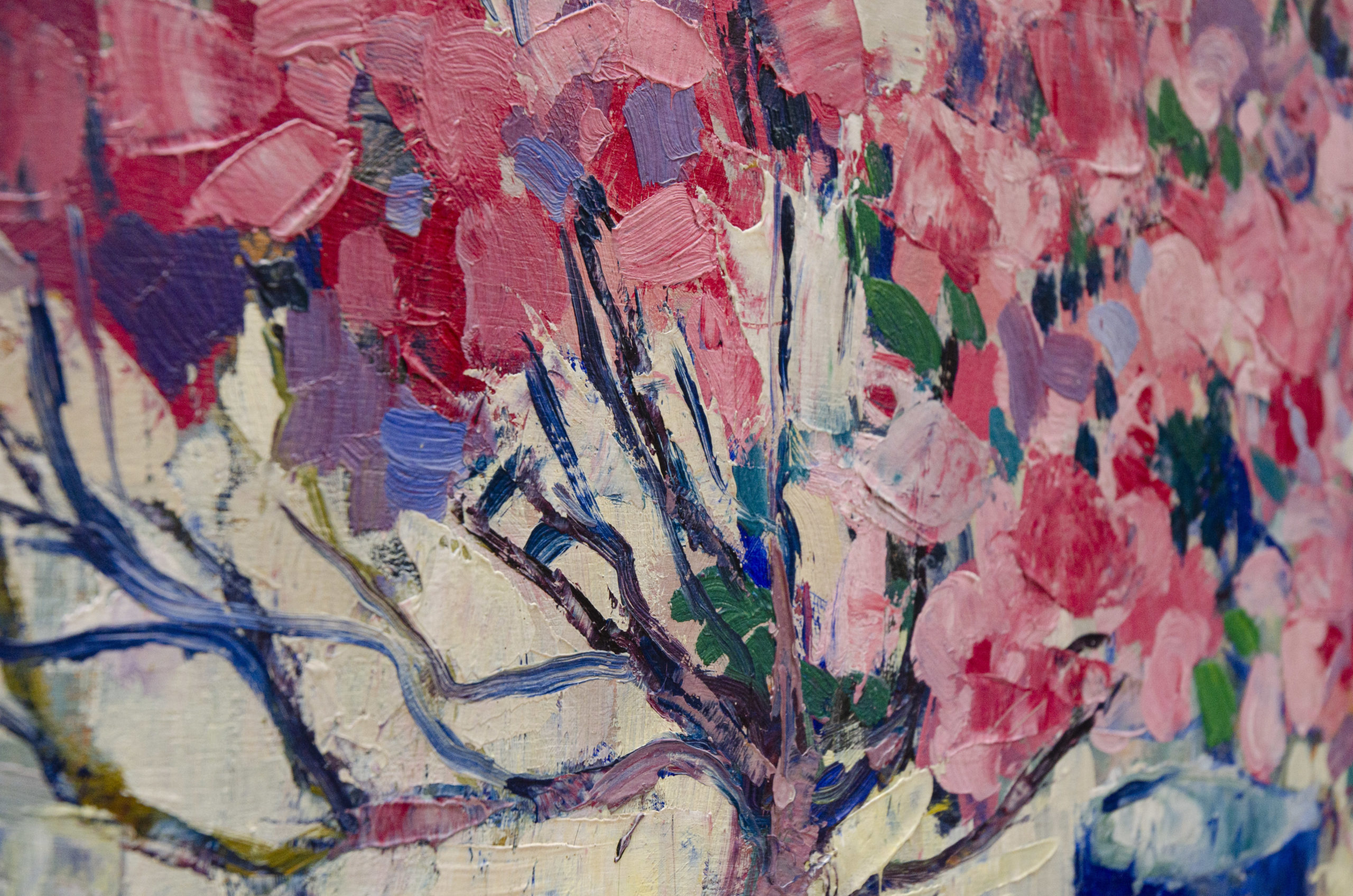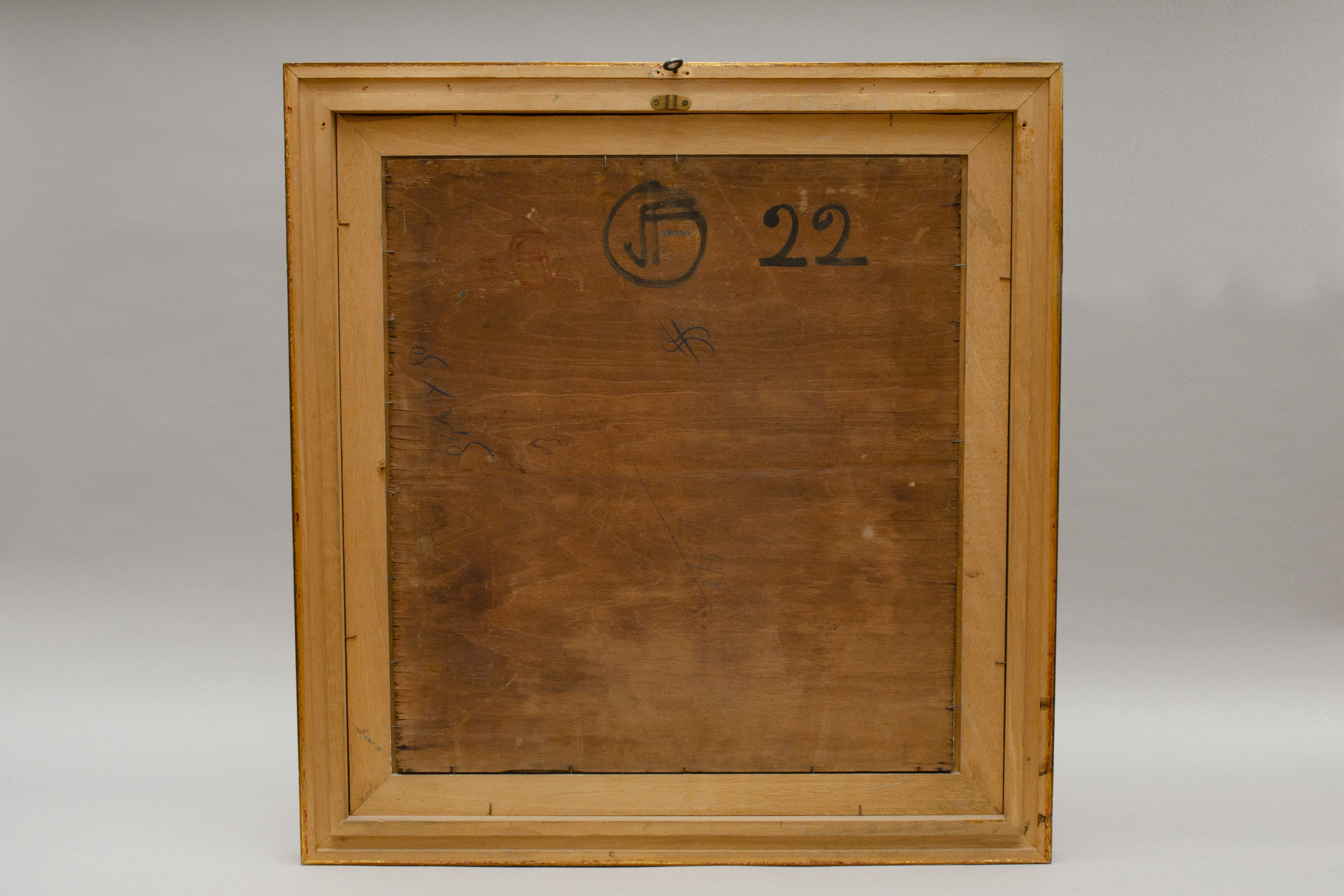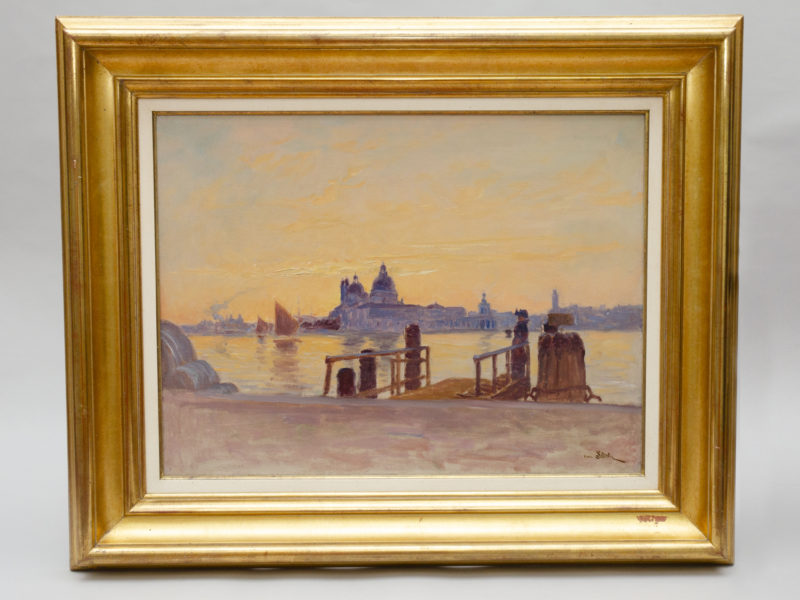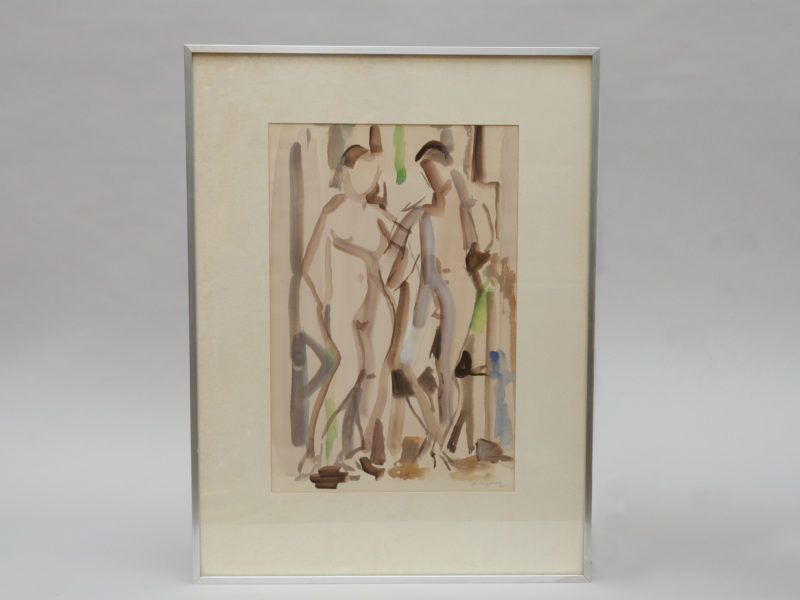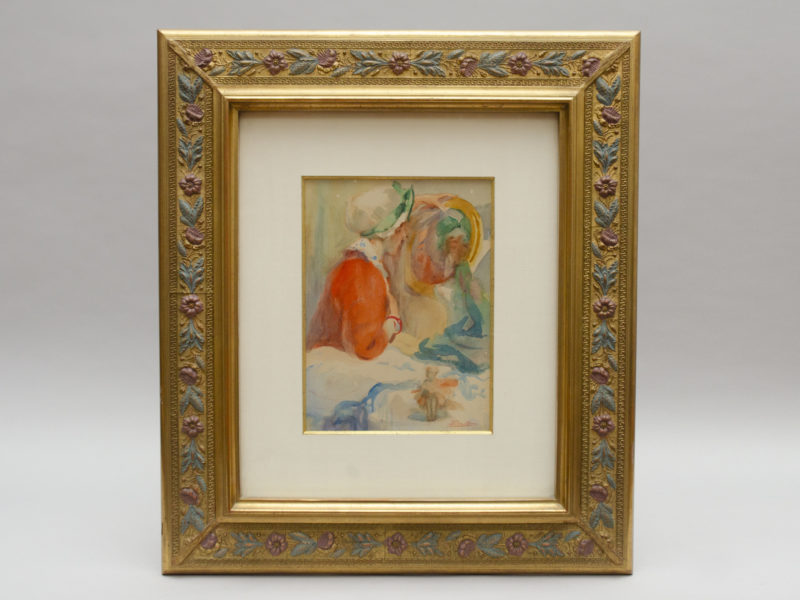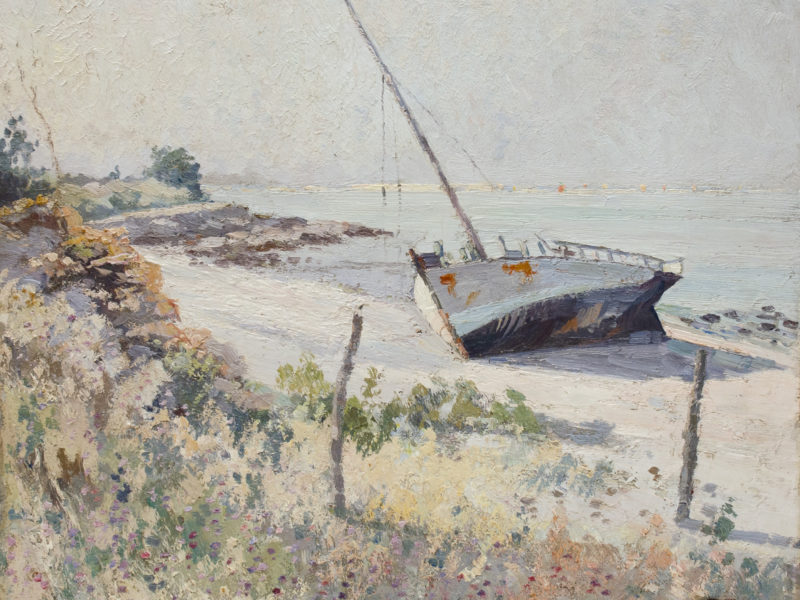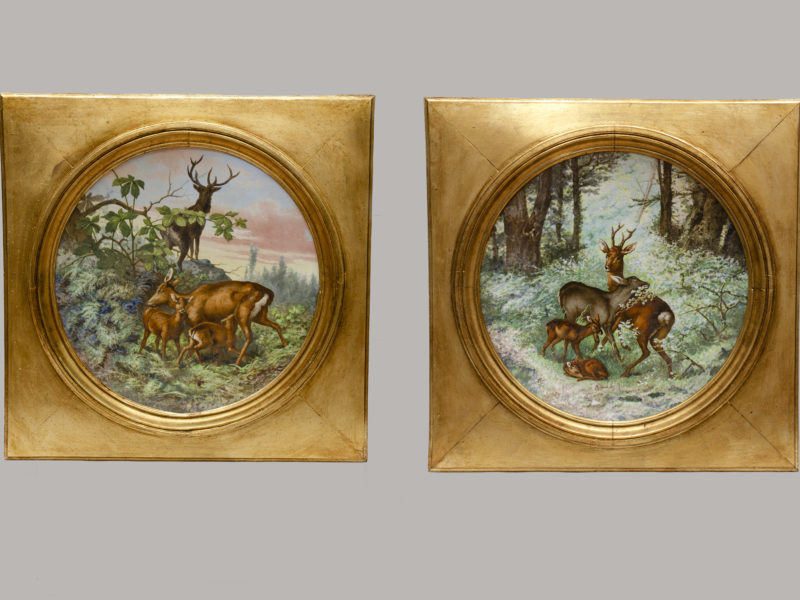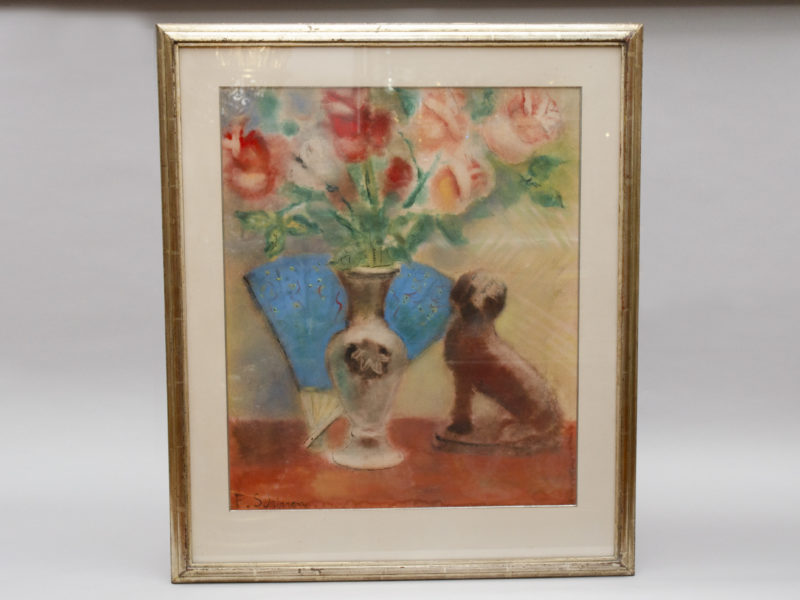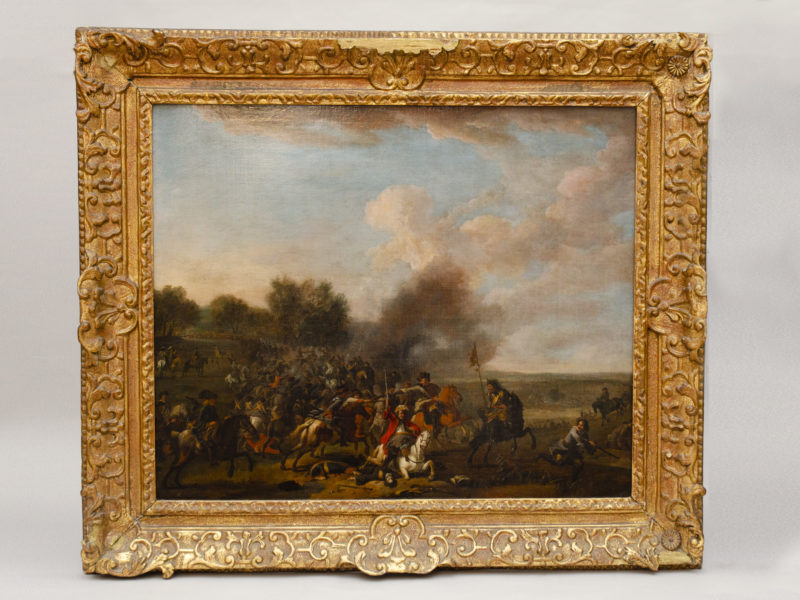“Still life of flowers”, FRISON Jehan (1882-1961)
Out of stock
Beautiful still life of flowers and fruit with a blue jug. Beautiful “fauvism” technique with vivid colors and thick brushstrokes. Oil on panel. Signed and dated 1918.
Size: H 54cm x 50 cm – H 70 cm x W 68 cm
Belgian school of the first quarter of the 20th century.
Lit : Belgian painter Jehan Frison was born in 1882 and died in 1961. He is known for his figure compositions, animated landscapes, landscapes, seascapes, still lifes, wood sculptures and engravings.
Jehan Frison began his studies at the Academy of Saint-Josse-ten-Noode. From 1896 to 1902, he continued his training at the Royal Academy of Fine Arts in Brussels, where he met Rik Wouters (1882-1916), who was himself enrolled between 1900-1904 and 1907-19082. The two artists developed a friendly relationship, particularly during the period when the Wouters family lived in the commune of Boitsfort (1904-1914) and were visited only by J. Frison, Victor Seydel and Fernand Verhaegen (1883-1975) in their hovel and attic, which was used as a studio. Rik Wouters made a bust of J. Frison (bronze), which he exhibited at the 4th salon of the Cercle d’art Les Indépendants in Brussels in 1907. They also held a joint exhibition with some friends from the Brussels art circle “Rietkamerke” at the Galerie Boute, rue Royale, in January 1907.
It was during the activities of the free studio L’Effort (opposed to academic normativism) that Jehan Frison befriended its figurehead, the Fauvist painter from Auderghem, Auguste Oleffe (1867-1931). The historian Paul Colin cites J. Frison alongside Rodolphe Strebelle (1880-1959) and Arthur Navez (1881-1931) as one of the three best painters who, following in A. Oleffe’s footsteps, developed a strong and singular art. P. Colin describes J. Frison’s painting as the most narrative. For him, “His painting does not interpret the subjects and does not transpose anything, not even the colours. With a clear eye and an obedient palette, Frison plays with the tones of spring and summer, and enhances them with the fanfare of fabrics and the brilliance of flowers. His paintings are often artificial and paper-thin. But they are joyful and easily satisfy the desires of those for whom art is a fleeting distraction.
The influence of Brabant Fauvism (a movement closer to Post-Impressionism than to French Fauvism) led Jehan Frison to produce an intimate style of painting with a rich, colourful palette, whose favourite subjects were landscapes of Linkebeek, interior scenes and still lifes.
He settled in Linkebeek in 1913 and did not leave the town until his death on 22 October 1961. He travelled to France (Paris, among other places), England (London) and Italy (Venice), and twice visited Morocco (1917 and 1928), a country for which he had a particular admiration and from which he drew the subject of many of his paintings: Orientalist scenes, wadi landscapes and Berber villages.
Out of stock
Contact us